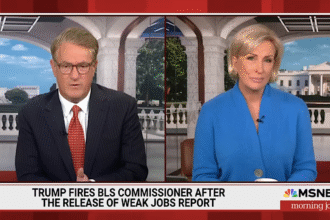Seth Meyers Loses It Over ‘Relentless’ Crazy Trump Headlines
In the ever-evolving landscape of American politics, few figures have generated as much discussion, debate, and—let’s be honest—outright bewilderment as Donald Trump. Late-night television, particularly Seth Meyers’ "Late Night with Seth Meyers," has been a key platform for dissecting Trump’s often sensational and outlandish headlines. Recently, Meyers found himself in a moment of comedic exasperation, encapsulating the collective astonishment felt by many Americans. This blog post will delve into that moment, exploring the nature of the headlines that have sparked Meyers’ reactions, and what they reveal about contemporary politics and the media landscape.
The Relentless Cycle of Crazy Headlines
Over the past few years, the headlines surrounding Donald Trump have ranged from the absurd to the alarming. From questionable foreign policy decisions to bizarre social media rants, the media’s constant coverage of Trump generates a wave of sensationalism that can leave viewers reeling.
In a segment of "A Closer Look," Meyers outlined the most bizarre headlines in a manner that was both humorous and poignant. He zeroed in on the “relentless” nature of Trump’s headlines and the media’s role in perpetuating this cycle. With each passing day, it seems, there is a new story that defies expectations, only to be overshadowed by another just as bizarre—if not more so.
The Comedic Genius of Seth Meyers
Seth Meyers has carved a niche for himself as a sharp-witted commentator on the absurdities of American politics. His comedic style deftly combines skepticism with wit, allowing him to tackle even the most outrageous allegations with a balance of levity and gravity.
Meyers isn’t afraid to express his incredulity. His breakdowns of Trump’s more bizarre headlines are laced with sarcastic humor, revealing the absurdity of the political climate while also inviting his audience to reflect on its implications. His reaction to the relentless nature of the headlines often leads to impassioned rants that resonate with viewers who feel similarly overwhelmed.
The Absurdity of Reality
In his recent segment, Meyers spotlighted several headlines that captured the wildness of the contemporary political arena. He related incidents in which Trump tweeted incoherent messages in the early hours of the morning or made baffling statements during press conferences. These moments, particularly when captured in recaps, reveal a larger truth: political discourse has shifted from serious debate to a realm where even the most shocking statements seem par for the course.
Meyers’ delivery encourages viewers to not only laugh at the headlines, but also to reflect on their implications. The headlines may be outrageous, but they also point to a larger issue: the normalization of extreme rhetoric in politics. Without a doubt, Trump’s presidency has ushered in a period where language and decorum have shifted—this is both disheartening and, at times, hilariously surreal.
The Role of the Media in Perpetuating Absurdity
The media plays a crucial role in shaping public discourse, and Meyers hasn’t been shy about calling it out. His comedic critiques serve as a reminder that sensational headlines are often driven by ratings and clicks. The landscape of news consumption has changed dramatically; news outlets are incentivized to prioritize sensational stories over nuanced reporting.
Meyers pointed out this paradox in his analysis: while outrageous headlines might be entertaining, they can also distract from important policy discussions and lead to a muddling of facts. The sheer volume of bizarre headlines can overwhelm viewers, generating confusion about what is genuinely significant versus what is merely sensational.
The Emotional Toll of Political News
For many viewers, the constant barrage of wild headlines can lead to a sense of fatigue. This is particularly true for those who strive to stay informed amid the chaos. Meyers’ over-the-top reactions serve as an outlet for collective frustration, echoing the feelings of many who find themselves grappling with political anxiety.
In a way, Meyers is not just a comedian; he is also a conduit for public sentiment. His expressive frustration can resonate deeply, providing catharsis for viewers who might otherwise feel isolated in their bewilderment. The connection he forges with his audience reflects a shared experience in the convoluted world of modern politics—one filled with moments of laughter, disbelief, and, quite often, despair.
The Fine Line Between Comedy and Commentary
Meyers’ unique approach blurs the lines between comedy and political commentary, forcing viewers to reflect on serious issues through a comedic lens. His take on Trump’s headlines often reveals deeper societal anxieties about governance, leadership, and the role of truth in politics.
The intersection of humor and politics raises questions about how we consume news. Are we to laugh, cry, or shout in frustration? In an era marked by disillusionment, Meyers challenges his audience to consider their relationship with political news and encourages them to maintain a critical eye while also finding moments of levity.
Conclusion: Laughing Through the Madness
Seth Meyers’ recent breakdown of Trump’s “relentless” crazy headlines captures the broader sentiment of a nation grappling with the absurdity of its political reality. As political discourse becomes increasingly sensationalized, Meyers reminds us that humor can be a powerful tool for processing the chaos.
While many may feel overwhelmed by the sheer volume of outrageous headlines, Meyers’ comedic approach not only provides entertainment but also invites reflection on the political landscape. As we navigate this tumultuous period in American history, Meyers encourages us to laugh in the face of madness, offering a much-needed perspective during seemingly endless cycles of political absurdity. In doing so, he turns the absurdity into a communal experience, allowing viewers to bond over the collective madness that defines our times.





